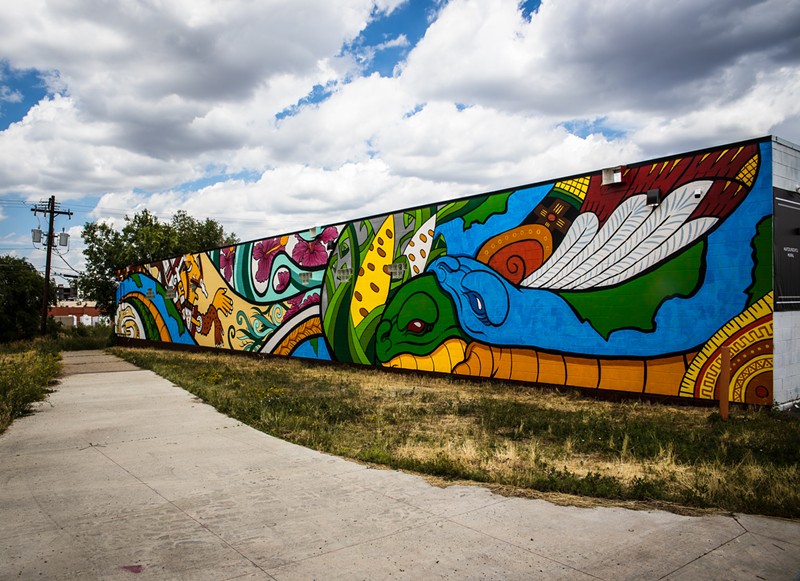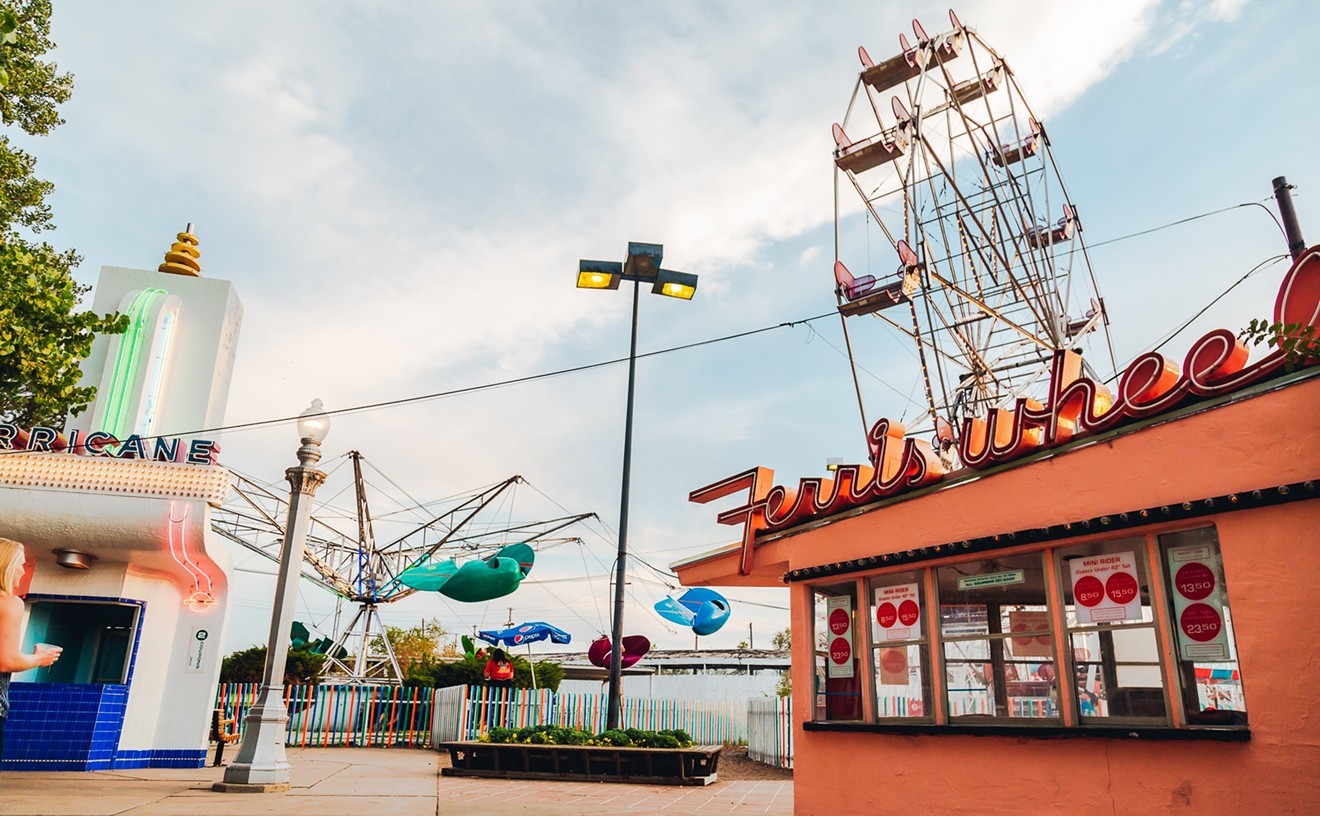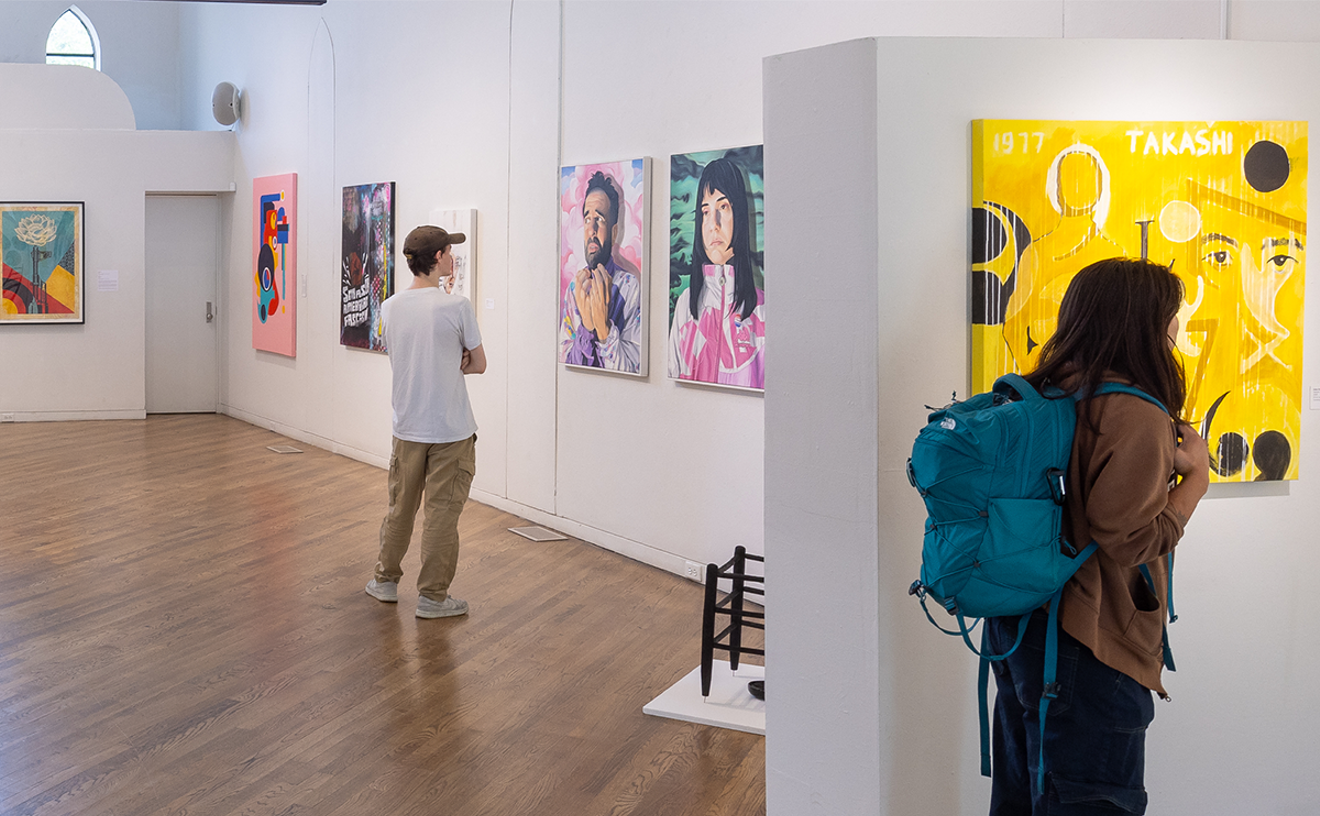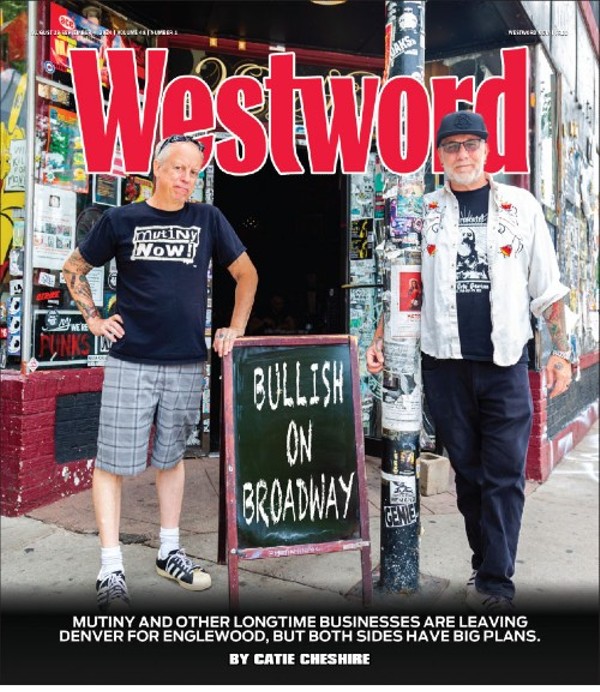The mural had special meaning for the artist as well as the rest of the Chicano community. But in April 2020, it was whitewashed.
Although Sisters of Color is now located in Park Hill, the organization still owns the building in Sun Valley. The current tenant — the Mana Supply Co. dispensary, a sibling to medical dispensaries in Maryland — painted over the mural, despite a stipulation in its lease calling for written consent to make alterations or changes. But the disappearance of the mural did not go unnoticed.
Lucha Martinez de Luna, director of the Chicano/a Murals of Colorado Project and daughter of celebrated muralist Emanuel Martinez, shared the news via the organization's Instagram on April 30, 2020: "The destruction of this mural highlights the importance of protection and preservation of important cultural works of the Chicano community in the face of gentrification."
Martinez de Luna works as an archeologist and anthropologist with History Colorado and has excavated sites in both Mexico and the United States — work that contributed to her desire to preserve Chicano art in Colorado. She launched Chicano/a Murals of Colorado in 2018, with a goal of preserving and sharing stories of the community's public paintings across the state, from her father's murals in Delta to new works in the Roaring Fork Valley to pieces here in Denver.
Since "Huitzilopotchli" was covered, she's been working to restore the mural with David Garcia and the team at Mana Supply Co. The company says there was a miscommunication with the crew that painted the building last year, and that it's very open to collaborating on a restoration of the mural. According to Martinez de Luna, such willingness to work with artists — particularly artists of color — is rare for local businesses, so the collaboration is "an excellent opportunity to move forward," she says.
"Our solution was to bring back 'Huitzilopotchli' and also do a healing mural," explains Martinez de Luna, pointing to the just-completed "Xipe Totec" on the west-facing wall of the building. The new mural is a collaboration of Denver artists Alicia Cardenas, Victor J. Escobedo and Marco Antonio Garcia.
"I've been following each of their works, and I feel like it's very much in line with what the mural movement was about that began fifty years ago," Martinez de Luna explains. "It works with the community, it directly describes our community, and it also our links to our Indigenous heritage." While each artist has a unique style, those styles work together well — which Martinez de Luna and David Garcia noticed when deciding whom they should work with on the healing piece.

(From left to right) Artists Victor J. Escobedo, Alicia Cardenas, and Marco Antonio Garcia stand in front of their collaborative piece, "Xipe Totec" at Mana Supply Co.
Anthony Maes
Victor J. Escobedo is with the Birdseed Collective, a Globeville organization that uses art to do outreach with youth and the broader community. He's currently a resident artist at RedLine Contemporary Art and is working on a puppet show, Ojos en La Selva, funded by a grant from the Jim Henson Foundation.
Painter Marco Antonio Garcia is David Garcia's brother; he recently returned to Colorado from Florida, where he'd been doing caricatures and other paintings around Walt Disney World for two decades. When the pandemic halted a move to Japan for a job at Disney Tokyo, Marco and his family decided it was a good time to move home. His personal work focuses on the beauty of "our surroundings, craft and nature," he says.
At the end of June, the artists worked over a week — day and night — to cover the massive wall. "We had to do a mural about rebirth, because that's what we're trying to do," explains Cardenas. "That's pretty much the direction we were given."
"That was directed by David. This is what we want it to be based on," adds Escobedo, who blocked out the basic structure of the piece, then handed the project over to Cardenas and Marco Garcia. They each added what they felt best represented the general theme of rebirth, looking to Aztec imagery and histories for direct inspiration as well as symbols that represent regeneration and rebirth in Indigenous communities.
Cardenas re-created a version of Xipe Totec, an Aztec god known as "the Flayed One," who wears a new human skin to represent rebirth and spring. She says she was drawn to depict him not just because of what Xipe Totec represents, but also because of how he — and the history of pre-Colombian peoples — have been misrepresented through a colonial lens.
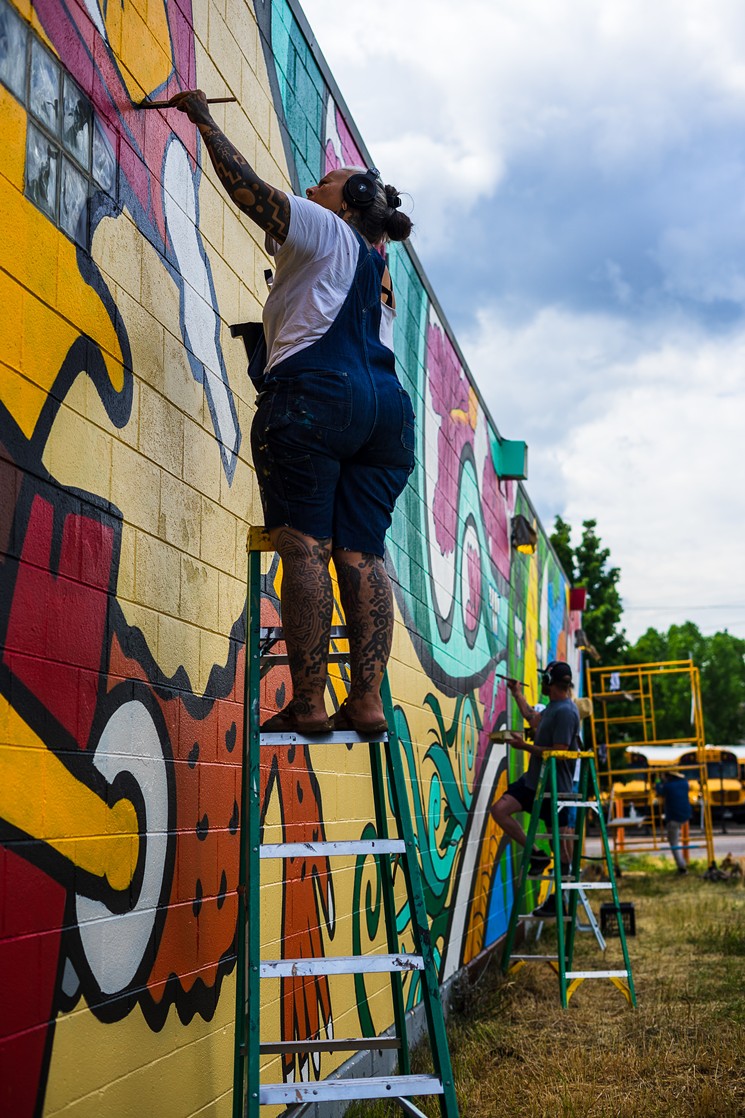
Artist Alicia Cardenas (front) works on the "Xipe Totec" mural on Mana Supply Co. in June 2021.
Anthony Maes
Marco Garcia used corn, a symbol common to Indigenous communities throughout the Americas, to represent the importance of food and land, as well as the continual rebirth of the earth. There's also a connection to the original "Huitzilopotchli," in which his brother painted stalks of corn on either side.
As they added their imagery, Marco says, he and Cardenas found that Escobedo hadn't offered much of his style past the basic layout. So Escobedo later added a coatl (snake) shedding its skin, in vibrant blues and greens, to add to the idea of rebirth.
The mural also has elements of Polynesian culture — a shout-out to Mana Supply Co., which incorporates South Pacific imagery in its business. There's an overlap of Indigenous cultures around the globe, Cardenas says, and the artists wanted to use that as a reminder that "we all come from the same place."
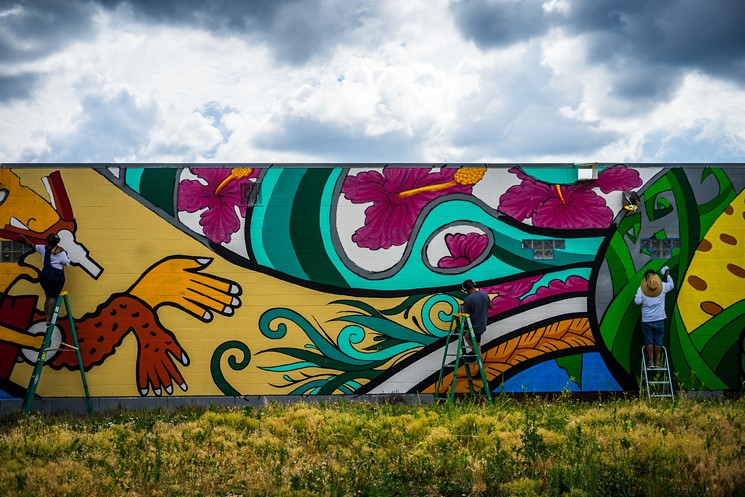
(From left to right) Alicia Cardenas, Marco Antonio Garcia, and Victor J. Escobedo work on the "Xipe Totec" mural on Mana Supply Co. on 8th Avenue.
Anthony Maes

Victor J. Escobedo (front) and Alicia Cardenas work overnight to outline the "Xipe Totec" mural off of Eighth Avenue in the Sun Valley neighborhood.
Anthony Maes
"It is about claiming space, and it is about valuing ourselves," adds Cardenas. "We are making the artifacts of the future. How do we treat that? We hold it gently. You hold it in your heart."
The work of the Chicano/a Murals of Colorado Project is important not just because it holds the past, but also because it creates space for current Indigenous and activated artists in the state, Escobedo notes. Although he's trying to shed the added label of "Chicano" or "Indigenous" and simply be seen as an artist, a lot of his works celebrate his Indigenous heritage. "They're giving us a lane to be that," he says. "Without it, it may not be seen."
After working on the mural, Marco Garcia wrote a poem about his involvement:
Con un profundo Movimiento, Estellamos una nueva energía y nueva esperanza"Xipe Totec" is done, and David Garcia will finish restoring "Huitzilopotchli" soon. Meanwhile, the Chicano/a Murals Project of Colorado is continuing to preserve and restore other murals and histories — not only in Colorado, but across the country.
La cáscara añeja ya no rinde más!
Con respeto a los antepasados seguiremos adelante y comenzamos de nuevo
A caso con dolor y angustia abandonamos y quebramos el armazón que nos confina
Como una familia nos alzaremos con amor y con paciencia
With a profound movement we burst forth a new energy and a new hope
The old husk cannot continue on!
With respect to our elders we will move ahead and start anew
Perhaps with pain and anguish we abandon and break free from the old armature that confines us
Like a family we will lift each other up with love and patience
Both Martinez de Luna and David Garcia are currently working with the Social and Public Art Center in Los Angeles on murals in that city. And both the center and the Chicano/a Murals Project are pushing to create laws that would protect murals — particularly murals by artists of color — by giving them historical designation.
"We're definitely moving forward and trying to find solutions on a nationwide level," says Martinez de Luna. "It's just us learning and supporting each other."

